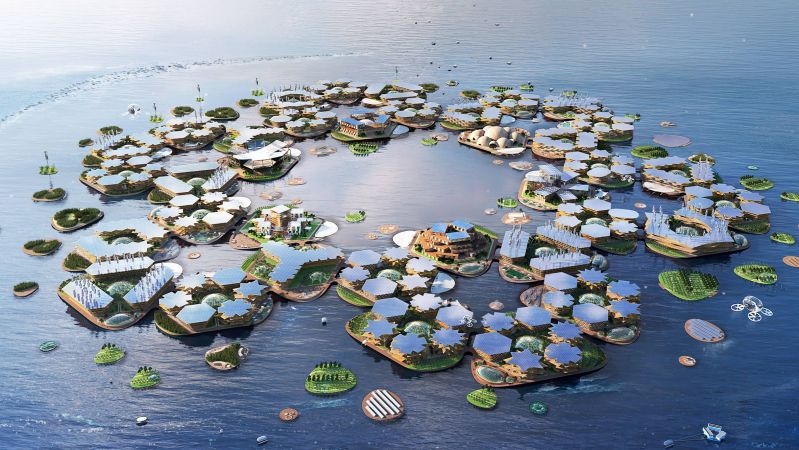Floating Cities as a Viable Solution to Urban Challenges Such as Climate Change
Published on by Water Network Research, Official research team of The Water Network in Social
UN-Habitat convened a roundtable discussion of architects, designers, academics and entrepreneurs at UN Headquarters on how floating cities could be a viable solution to urban challenges such as climate change and lack of affordable housing.
The meeting was co-convened with Oceanix, a company looking to build the floating structures, the Massachusetts Institute of Technology (MIT) Center for Ocean Engineering and the USA-based Explorers Club.

Oceanix City by architectural studio Bjarke Ingels Group (Source: Oceanix)
The day-long roundtable of over 70 people discussed the proposed structure and design of floating cities, how they would be situated close to cities and could be used to house those fleeing from rising sea levels and other threats from natural or climate-related disasters in their home areas and overcome housing shortages.
The UN Deputy Secretary-General, Amina Mohammed, who made the opening remarks in the afternoon, said the meeting was pushing everyone’s thinking.
“We have come together here to think ahead and reimagine our cities and our urban agenda,” she said.
UN-Habitat’s Executive Director Maimunah Mohd Sharif said now was the time for innovation and new ideas adding that they must help everyone.
“We must to ensure that the benefits of technological advances are a basic right, not a privilege of the few. UN Habitat is ready to provide the platform so that we can engage the best minds in every part of the world,” she said.
Leading architect Bjarke Ingels explained the design of the floating cities which, he said, would be home to 10,000 people, could withstand severe weather conditions and would produce their own power and food and manage water and the disposal of waste.
“We are trying to imagine a country based on the 17 Sustainable Development Goals,” he said.
Nobel Laureate, Professor Joseph Stiglitz pointed out a wider application of these ideas saying that “some of the most important benefits are not going to be in floating cities, but on land if you think about recycling waste and water.”
His words were echoed by Suzy Amis Cameron, who is an environmental advocate along with her husband, film director James Cameron.
“If we are able to create a closed loop system for floating cities, they will become role models for cities around the world,” she said.
The co-founder of Oceanix, Marc Collins Chen, said the floating cities had to be affordable and said they aimed to build a prototype on a reduced scale to solve the small problems first.
The meeting heard from a group of young people in Nairobi, Kenya who gave their thoughts on the future of urban living via a portable screen known as Ava.
Young people have ideas but they lack support and recognition but they will continue and make sure they change the lives of people,” said Isaac Muasa, an environmental activist in the informal settlement of Mathare and winner of last year’s UN-Habitat Scroll of Honour award.
“Youth are the future of cities both floating and non-floating and should bring them along and tap into their creativity and we can build together,” added youth advocate, Raphael Obonyo.
The theme of the first UN-Habitat Assembly in Nairobi from 27 – 31 May will be Innovation for better quality of life in cities and communities and UN-Habitat’s Deputy Executive Director emphasized that the roundtable was just the beginning of such discussions.
“We want to create a platform for leading companies, innovators, explorers, and scientists to engage with UN-Habitat in creating breakthrough innovations for a better urban future and environmentally sustainable human settlements,” he said.
Source: UN Habitat
Media
Taxonomy
- Urban Drainage
- Urban Resource Management
- Urban Water Supply
- Urban Water Infrastructure